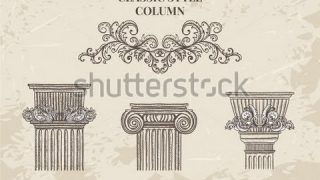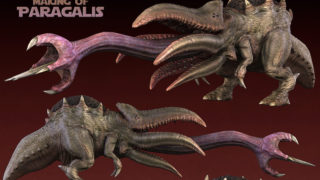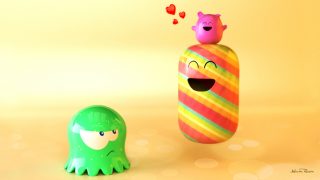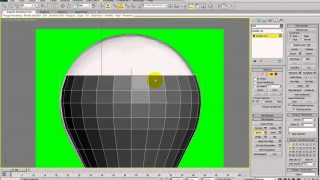
How to create cool tribal symbols and signs – Part 2
Now we’re back! This tutorial section will cover the post – production work in Photoshop, and how to make your logos look really cool. This part of the tutorial should also be easy, and you can still email me about any tips, questions, or comments to your liking about this. Thanks!
Now let’s get started! First off, open up your alpha logo made with 3dsmax, I will be using the same one from the first part of this tutorial. Anyways, open up your logo and go to the top menu and select, filter, blur, radial blur. (NOTE: Some versions of photoshop may not have the Radial Blur plugin available. Check for updates at www.adobe.com) Here is an example:

Now for the settings, make the amount of the radial blur set to 5, with the blur method selected at Spin, and the Quality to Best. (The, “best,” quality is just recommended for the best results…go figure.)

Now that you have this done, save your picture under a new name (for data restoring and such.) Here is what it should somewhat look like:

In my opinion, I think the radial blurring could look better. So what you should do now is press Ctrl + F twice (or go to filter and redo the filter effect 2 more times.) Here is what it looks like now:

Ok, now it looks a little more practical and somewhat better in my opinion. You can choose how many times you apply the filter of course, so it’s all up to you on how you would like it.
Next step, go ahead and experiment with some more cool filter effects to see what you like the most. I will use, “Plastic Wrap,” for my example. You can find Plastic Wrap under the, “Artistic,” rollout under filters:

Now for the settings, I made the highlight strength set to 15, the detail set to 10, and the smoothness set to 5. Here is an example of the Plastic Wrap Settings:

And here is what my render looks like so far:

It’s getting a little better now, but it’s still missing something. How about some lighting fx? Go to filter, render, lighting effects:

Now in the settings menu, open up a preset style called, “Circle of Light.” And without moving any of the lights, select them individually and make them all Omni lights with an intensity of 32, and make the gloss at 100, the material at -100, the exposure at 0, and the ambience at 6. Here is an example of the lighting settings:

And after applying these settings for the lighting, you should get something out similar to this:

Ok now it’s looking kind of interesting as you could say. The light is a little too high I think, so I will edit some of the image adjustments. You can edit them by going to the top menu bar and selecting Image, Adjustments, and then go to Photo Filter. Here is an example picture to show you where to go:

Now for the photo filter settings. Select, “Filter,” and then choose Deep Red, and set the density to 100% and check, “Preserve Luminosity.” Here is another example image:

Here is what my render now looks like:

Now I’m really starting to like the render. It’s time for the last couple of steps. (NOTE: This next step is somewhat similar to Sin-D’s Photoshop tutorial about making your render look better. The first part of this step was thought up from her cool and helpful tutorial, so I give credit to her for that.)
First off, create a new layer from the background. Here is an example:

Now for the settings, make the color set to none, and the mode to Soft Light:

Now go back to, “Layer,” at the top menu, and choose, “Duplicate Layer.” Here is the example:

Now FINALLY the last step. We are going to make this look even better now. Go to filter, sketch, and select, “Conte Crayon.” Here is the example:

Now on the settings part, make the Foreground Level set to 11, the Background Level set to 8, and texture set to Canvas, scaling at 100%, and the relief at either 4 or 5. Here is the example screenshot if you want to see it easier:

Now press Ctrl + I to invert the colors to the opposite coloration. Or you can also go to image, adjustments, and select Invert. (The shortcut key is easier and quicker though.) And now for the very last part, add another Plastic Wrap Filter with the same settings as before. But to make it easier, here are the example screenshots again:


And here is the final render:

Well, that about wraps it all up! I appreciate you taking your time to taking my tutorial, and I again say that I hope you will check out my others when they come out! Please email me if you have anything to say, and I would love to see your artwork! Thanks again!
All renders/material content used are copyrighted by Necksmasher © 2004








